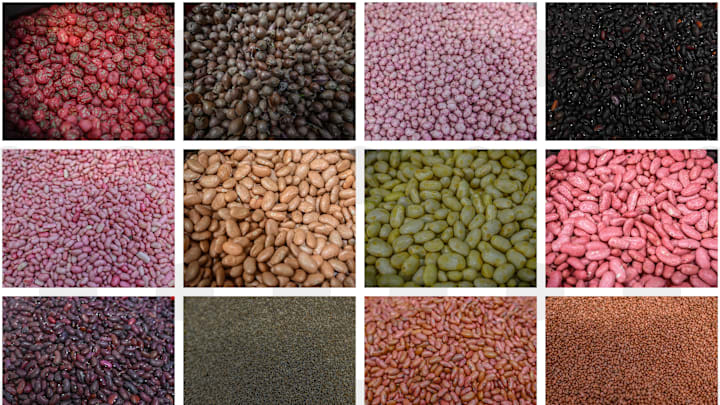Global nutritional trends are leaning toward a healthier lifestyle, which means that antioxidants have gained popularity — and for good reason. They help protect your body from diseases like diabetes and cancer. Your body can make them, but the biggest source of these compounds comes from plant-based foods. Here are five antioxidant-rich foods and tips on how to incorporate them into your diet.
1. Go Nuts for Nuts
Nuts are the perfect snack when you’re at work or have a busy day. Walnuts, chestnuts and pecans are known for being rich in polyphenols, vitamin E and healthy fats. Apart from their health contributions as antioxidants, nuts also support brain function and cardiovascular health. They’re also known to promote weight loss. These three types of nuts can help manage your appetite while keeping you healthy.
How to Have Them
- Snack: Nuts can be eaten as a snack between meals.
- Breakfast or a snack: Add chopped nuts to oatmeal and yogurt or top your salads with them.
They naturally contain healthy fat, but calories still add up, so eat your nuts in moderation. The best way to prepare your nuts is to have them raw or dry-roasted instead of cooked in oil.
2. Spinach and Chia Are Great Antioxidant-Rich Foods
Spinach and chia are powerhouse antioxidant-rich foods with added nutritional value and are easy to incorporate into your diet. Consuming vegetables high in antioxidants is good for your gut health since they’re full of fiber and vitamins. Spinach is rich in iron, potassium, magnesium, and vitamins C and E. It also has an antioxidant known as alpha-lipoic acid, which is beneficial for anyone who has diabetes.
Chia seeds promote heart and bone health and sugar improvement. While these seeds seem small, they have big nutritional value. Spinach and chia seeds are high sources of fiber. This duo can give you a healthy gut, provide a scrumptious meal and lower your risk of diseases. Remember to also drink plenty of water to prevent any digestive problems.
How to Have Them
- Smoothie: Blend fresh spinach, chia seeds, bananas and milk.
- Omelette: Use about two or three eggs and add spinach, cheese and chia seeds for breakfast or lunch.
- Salad: Substitute lettuce with baby spinach, add vegetables and top it off with a chia dressing for a light snack.
3. Eat Your Red Cabbage Hot or Cold
Red cabbage is known for its nutrient-rich antioxidants. It provides health benefits like reduced inflammation, diabetes and cancer risks, and improved heart health and gut function. Apart from its ability to remove free radicals that contribute to chronic diseases, red cabbage is also high in vitamin C.
How to Have It
One of the healthiest ways to eat red cabbage is raw or steamed.
- Teriyaki salad: A mixture of vegetables like broccoli, kale andred cabbage serves as a healthy lunch or dinner.
- Noodles: Mix noodles with carrots, broccoli, red cabbage and onions as a starter before your main meal.
4. Beans Are Good for Your Heart
Like nuts, beans contain polyphenols. They are rich in fiber, iron and vitamins. Beans are legumes, which are the seeds of the plant. There’s a link between the intake of legumes and a decreased risk of cardiovascular and coronary heart diseases.
How to Have Them
- Soup: Choose your favorite type of soup and add boiled beans. Soup also contains several health benefits, like being gentle on your stomach, keeping you hydrated and helping your immune system.
- Salad: Adding beans to any green salad promotes nutritional value. This can be eaten as a meal or alongside grilled chicken, which is high in protein.
5. Enjoy Dark Chocolate as a Healthy Treat
Most Americans prefer milk chocolate, but the real winner is dark chocolate. It provides value that improves your health by reducing inflammation and heart disease risk factors. Dark chocolate contains antioxidants that prevent oxidative stress. It also contains flavonols, which activate nitric oxide and lower your blood pressure.
Another perk of eating dark chocolate is that it makes you feel fuller for longer. Most importantly, eating dark chocolate improves your brain function, and its endorphins make you happy.
How to Have It
- Dessert: There’s no right or wrong way to eat chocolate, but a small piece after dinner is advantageous for your body.
- Moderation: Chocolate contains calories, so as long as you have them in pieces, they are great as a dessert or shavings over a fruit salad.
Eat Antioxidant-Rich Foods for a Healthier Lifestyle
Small changes have long-term benefits. Incorporating these antioxidant-rich foods into your diet does not require drastic changes — just mindful adjustments. These options are nutritious, delicious and can be incorporated into a meal at any time of the day. Start by introducing small changes, like a dark chocolate square as dessert, because it helps you appreciate your transformation.
